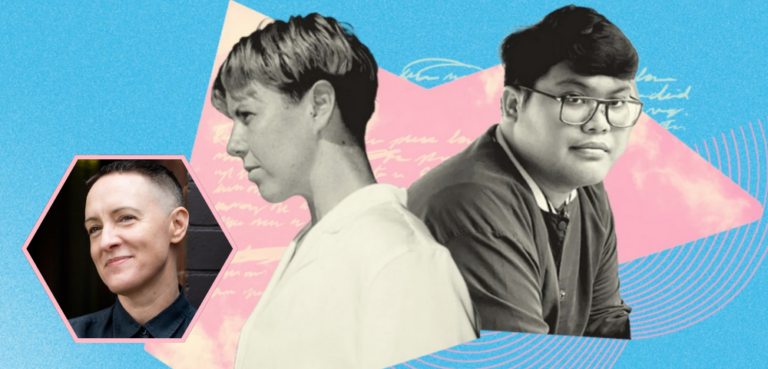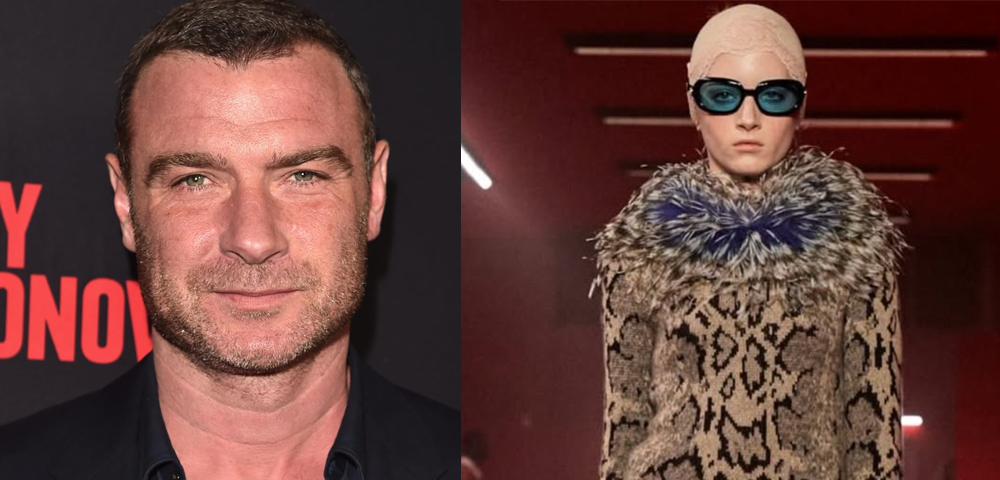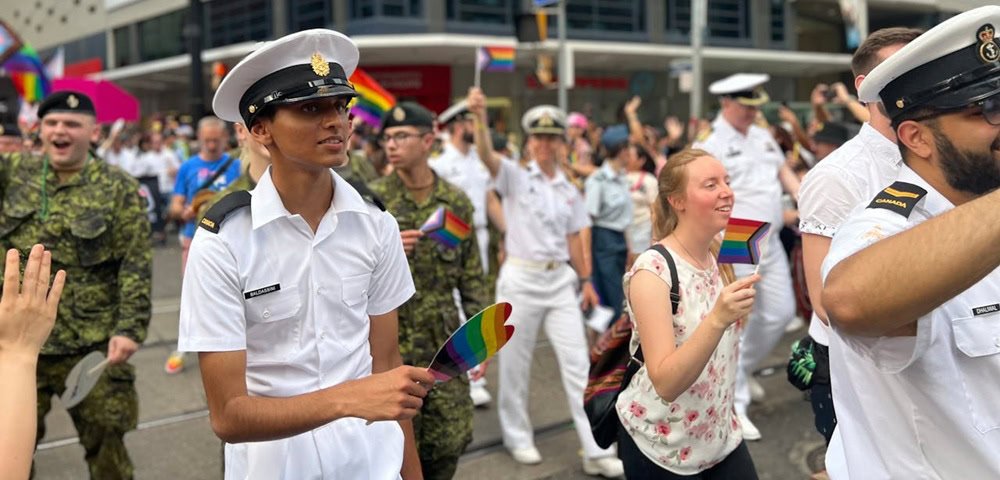
Health body’s cash crisis
Australia’s National LGBTI Health Alliance – which has just added an ‘I’ to its name to include intersex people – faces a make or break year in 2011, with only months before its core funding runs out.
The peak Australian GLBTI health organisation, made up of more than 100 member organisations around the country, will no longer be able to afford its lone full-time staff member and casual administrative assistant, resigning it to a completely volunteer organisation.
National LGBTI Health Alliance executive director Gabi Rosenstreich said the organisation needs critical core funding to survive and called on the Gillard Government to help the struggling body in the same way as other minority community organisations receive a leg up.
“Where we’re at is very up in the air,” Rosenstreich told the Star Observer.
“We are very fortunate that one of our founding member organisations has made a donation to keep staff for another couple of months, but essentially the seed funding … is running out within a couple of months.”
The National LGBTI Health Alliance was pivotal in negotiating money from the Federal Government to develop the recent Wear It With Pride campaign, designed to educate the gay and lesbian community on changes to 85 pieces of federal legislation.
“While we’ve had really positive feedback from the Federal Government on our work, we’ve yet to have any commitment to fund us,” Rosenstreich said.
“I appreciate that it’s not always easy to find suitable funding streams in an area where they don’t have a background of funding. However, given that most other identified marginalised communities in Australia have government support for a community-based peak body, it is disappointing that no commitment to fund an LGBTI health and wellbeing peak body has been forthcoming so far.”
The Alliance would need around $400,000 annually to work effectively.
The Allliance and the Department of Health and Ageing are in discussions about a possible mental health project, however Rosenstreich said funding is still in the early discussion stage.
“We don’t actually need a huge amount of money, but the LGBTI community sector cannot afford to fund a national peak body longer term,” she said.
“[The Alliance] won’t cease, because the networks and structure … is in place for members to work together and engage and still function as a useful national peak body.
“However, without staff, it’s really hard to drive those processes. Even with staff it’s a huge challenge, it’s a very poorly resourced sector.”
The Alliance will retain its Queensland-based chair Paul Martin in 2011, with Susan Ditter (Vice-Chair), Abi Groves (Secretary), Peter Hyndal (Treasurer), Daniel Ward (NT), Dani Wright (WA), Adrian Lovney (NSW), Mary Heath (SA), Greg Adkins (VIC), Rathana Chea (NSW), Gen D’Adam (NSW), and Andrew Burry (ACT).










I have seen first-hand all the excellent submissions, promotion, and advocacy that the LGBTI Health Alliance has achieved and think it is shameful that the government has not funded this important organisation. It is crucial that a national peak body is funded- especially so that LGBTI Australians from all over the country can have a voice. Over in Perth we are tragically under-funded and find it extremely difficult to get our voices heard, and the LGBTI Health Alliance does a fantastic job in representing our community in a way that has made politians, policy makers, and organisations take notice.
Keep up the great work! Which will only be possible with government funding.
I think a national peak body is crucial and should be funded accordingly. Existing peak bodies in the LGBTI sector have a focus on HIV and sexual health. The LGBTI Health Alliance has a much broader scope in terms of LGBTI Health which has been a real gap to date. Other marginalised community groups have government funded peak bodies, why should the LGBTI community be excluded from this national representation?
Hi teresa
The alliance made sex and gender diverse a key sub-theme of Health In Difference. During the conference, trans (and intersex) moved to form an alliance of activists – the first time this has happened on a national scale and due in large part to the alliance.
The alliance also marked trans remembrance day and has ensured mention of t and i and submissions on health.
Hi Peter,
Sure. I’m an Australian Tax payer. This new organisation wants my money to help my community. Conceptually I’m ok with that point.
But it seems to me (and it’s just my opinion I should remind ppl) that after 2-3 years of existence the Allisnce should have something tangible to prove it’s worth.
My tax dollars fund AFAO. they do a brilliant job. They have agreement with their members on the role they play. International stuff, facilitating national education lessons, heavy policy work etc etc. By and large AFAO doesn’t take money from its members and has a good cohabitual relationship with clearly defined purpose, achievements and plans.
I see none of this from the Alliance yet, aside from perhaps as Sally eludes to bringing together the diversity of our community(BTI), which does not seem to have or I don’t know about because it doesn’t get reported on any other collective voice.
If the Alliance wants my money it needs to show me, educate me and prove to me why it should be given that money as a peak body. Because as far as I’m concerned it would take money away from my direct services.
Take for example the Gay & Lesbian Health Victoria, the health MAC, ALSO, WayOut, CAN, VAC they all receive some form of state funding. They all have unique and complimentary purposes. They ALL have seat at the table and dont need a state peak body.
Why do we need a national one?
I apologize if I’m offending anyone, but I’m sick of our community always saying “me too… They have it I want it”.
Can I ask in all ignorance, what has the alliance delivered for Transsexuals?
I am 4 years post op so I have moved into mainstream “straight” life, but I ask what has been done to help the needs of the everyday Transsexual who just want to go thru the change with little fuss as possible.
Brian’s opinions here would suggest some kind of pecuniary interest, I think it would be both beneficial and fair to the debate for him to declare such interest in order to ensure a fair an open discussion …
Brian
The comment “much of the work is done by membership” is inaccuarate. Gabi Rosenstreich, the EO, busts her insides out and any functioning of the alliance would be 95% less than it is now without that full-time role.
Just because ATSIC didn’t work doesn’t mean a peak GLBTI body couldn’t work.
Further the alliance has an excellent record on diversity and is highly inclusive of L, B, T and I, indigenous queers. The AIDS orgs record overall in this area is, to put it mildly, not very good.
I’m guessing Jack is referring to recent Federal health reports – and if so, spot on. GBTI and LBTI would not have got a mention in the respective men’s & women’s reports without the alliance’s important efforts.
Disclosure: I was on the organising committee for Health In Difference 7 which the alliance put on in April-May 2010. I am proud to make that disclosure: it was a great conference and an sample of what the alliance can do. Funding the alliance would see more of that work for the benefit of all, not just gay males and HIV/AIDS which, with the exception of the NSW gender centre, are the only groups that receive government funding anywhere in Australia.
The Women’s and mens health results have come about because the last ALP national conference adopted a resolution to do so. And many organizations made significant submissions to the respective inquiry backing this up.
Which incidently was the other half of the quote you posted “has not delivered anything it’s members would not have done.
As for HIV funding, that’s the role of AFAO, not the Alliance isn’t it? That’s what the Federal Government funds them for isn’t it?
I’m yet to be convinced that a united front is the best way forward. Seems to me there could be a case of death by consensus/committee/fear of conflict.
As the article said the Alliance wouldn’t cease to function, it would still have networks and memberships.
So let me make my point in another way.
Given much of the work is done by membership… What is the point of paying an organization $400,000 per year? Where’s the value add? What’s the cost benefit?
Unless we have a united front we’ll get nowhere …
With minimal funding the alliance has worked behind the scenes on federal women’s and men’s health issues; applied funding pressure over HIV and helped with the roll out of the wear it with pride campaign
Not bad for an org that “has not delivered anything”
The Alliance has operated since 2007 with a paid staff member since 2009 and what do members and the broader community have to show for it? Next to nothing.
The Alliance has not delivered anything that it’s members would not have done. Indeed some of it’s releases seem to show a complete lack of reason to fund it.
It’s statements often sound whingy, like a victim and frankly I’d be ashamed to have it represent me.
As for it’s statement that it was pivotal in getting us funding for the recent t-shirt campaign, I don’t recall it saying or doing much to push for seniors just there to try and position itself as being relevant at the end.
Hopefully the new board will change this but until it does I think Butler/Roxon/Gillard would be very wise to stay away! Fund projects but we don’t need an incompetent peak body. Look what ATSIC did for their constiuents if you think we do…